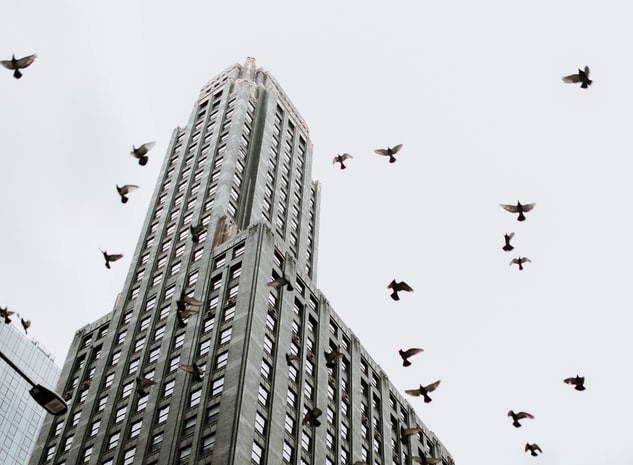
Designing Cities with Birds and Stargazers in Mind
April 7, 2021Photo Credit: Luke Witter on Unsplash
Cities across California are adopting measures to ensure buildings do not pose threats to bird safety, often pairing these measures with those that reduce sources of nighttime light pollution.
Although it may not be immediately obvious, our built environment can pose a threat to birds. Studies suggest that between 100 million and 1 billion birds are killed annually in the United States when they collide with buildings. Birds may perceive reflective glass to be an extension of the outdoor environment. Similarly, birds may fail to perceive transparent glass as a solid barrier. Birds are also attracted to nighttime lights. This affects their circadian rhythms, causes confusion, and can result in birds colliding with buildings or collapsing due to exhaustion.
Because nighttime light poses a threat to birds, measures aimed at improving bird safety may also support dark sky policies. Dark sky regulations aim to permit reasonable outdoor lighting while preserving the night’s ambience; prevent light pollution and intrusion; reduce degradation of the night sky; minimize glare and obtrusive light; and protect the environment from the damaging effects of nighttime lighting.
Cities throughout California are adopting zoning ordinances and other policies to address both bird safety and sources of light pollution. Existing zoning regulations and general plan policies may contain provisions related to outdoor lighting to ensure safety and prevent nuisances, but often do not specifically address concerns about bird strikes or light pollution. And while CEQA might provide an opportunity to address some of the same concerns, individual projects may not have significant impacts on either bird safety or night pollution such that mitigation measures would be required.
As a result, adopting a comprehensive and consolidated ordinance is an efficient and effective means of ensuring that new development will comply with bird safety and dark sky requirements, providing tangible benefits for city residents and wildlife alike. In California, cities including San Francisco, San Jose, and most recently the City of Cupertino have adopted specific regulations or policies to address these concerns. These policies may serve as a model to other California cities considering tackling similar issues.
There are multiple strategies for addressing bird safety and light pollution. To reduce confusion caused by highly reflective or transparent glass surfaces, regulations can require bird safety glass treatment for new buildings, including remodels and additions. In particular, the use of glass treatments, including the use of opaque glass, window muntins (which divide panes of glass), exterior screens or netting, or overlaying glass with visual cues are effective in reducing bird deaths. Based on recent studies, most glass treatments are estimated to add between 2% and 10% to the cost of windows. Ordinances can also limit the use of glass skyways or walkways, freestanding glass walls, or transparent building corners that may confuse birds.
Local governments can adopt similar measures to address sources of light pollution. Effective measures include requiring outdoor lighting to be shielded and downward directed; restricting the use of strobe lighting, high intensity lighting for recreation on private property, and spotlights; and limiting direct glare from lights onto adjacent residential properties. Ordinances may also require that most outdoor lighting turn off automatically after a specific hour. The use of automatic timers and sensors can assist in the imposition of such measures. It may be prudent to allow exceptions for certain critical areas, including stairways, ramps, and main walkways.
Cities and counties imposing bird safe and dark sky regulations may include various exemptions, such as for historic structures, storefronts up to 15 feet tall, 100% affordable housing developments, or specific zones. Common exemptions also include lighting in the public right-of-way and parks, lighting for signs, construction or emergency lighting, seasonal holiday lighting, and lighting that is required to comply with state law, including the building code.
City residents sheltering in place throughout the last year have often turned to bird watching and amateur astronomy as safe, outdoor entertainment options. Cities can help these activities continue and thrive by adopting bird safe and dark sky ordinances.
To learn more about how to draft zoning ordinances and other policies to address both bird safety and sources of light pollution, contact Lauren Tarpey.